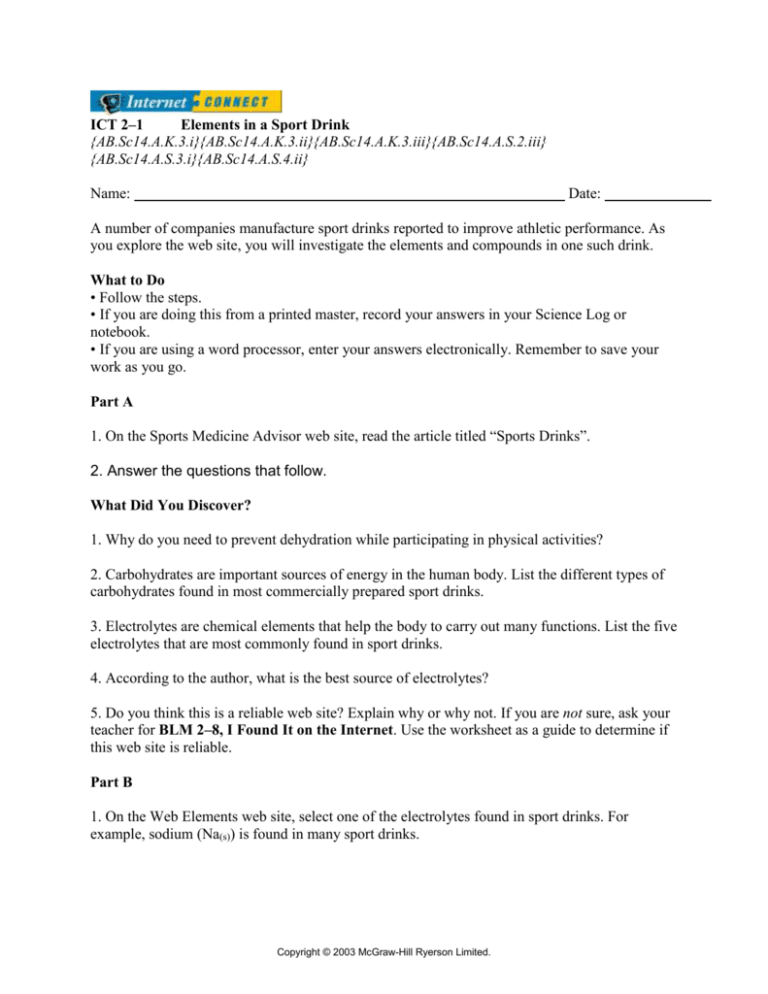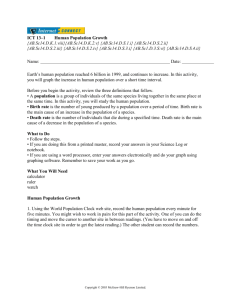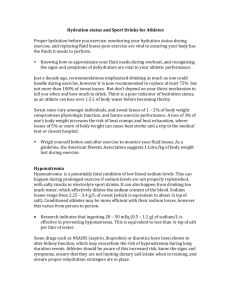ICT 2–1 Elements in a Sport Drink {AB.Sc14.A.K.3.i}{AB.Sc14.A.K.3
advertisement

ICT 2–1
Elements in a Sport Drink
{AB.Sc14.A.K.3.i}{AB.Sc14.A.K.3.ii}{AB.Sc14.A.K.3.iii}{AB.Sc14.A.S.2.iii}
{AB.Sc14.A.S.3.i}{AB.Sc14.A.S.4.ii}
Name:
Date:
A number of companies manufacture sport drinks reported to improve athletic performance. As
you explore the web site, you will investigate the elements and compounds in one such drink.
What to Do
• Follow the steps.
• If you are doing this from a printed master, record your answers in your Science Log or
notebook.
• If you are using a word processor, enter your answers electronically. Remember to save your
work as you go.
Part A
1. On the Sports Medicine Advisor web site, read the article titled “Sports Drinks”.
2. Answer the questions that follow.
What Did You Discover?
1. Why do you need to prevent dehydration while participating in physical activities?
2. Carbohydrates are important sources of energy in the human body. List the different types of
carbohydrates found in most commercially prepared sport drinks.
3. Electrolytes are chemical elements that help the body to carry out many functions. List the five
electrolytes that are most commonly found in sport drinks.
4. According to the author, what is the best source of electrolytes?
5. Do you think this is a reliable web site? Explain why or why not. If you are not sure, ask your
teacher for BLM 2–8, I Found It on the Internet. Use the worksheet as a guide to determine if
this web site is reliable.
Part B
1. On the Web Elements web site, select one of the electrolytes found in sport drinks. For
example, sodium (Na(s)) is found in many sport drinks.
Copyright © 2003 McGraw-Hill Ryerson Limited.
2. Click on the chemical symbol for the element you selected. For example, click on sodium
(Na). Locate the following links on the web site:
• Key Data — provides name, symbol, atomic number, group number, group name, standard
state
• Description — introduces the element
• History — explains how the element was discovered (if known)
• Uses — outlines how the element is used
• Biology — describes the biological role of the element
What Did You Discover?
1. Use the headings that follow to organize and record information about the element you have
chosen.
Element Information
Key Data
• Name
• Symbol
• Atomic number
• Group number
• Group name
• Standard state
Description
History
Uses
Biology
2. Use the same headings to record information about four other elements found in sport drinks.
Copyright © 2003 McGraw-Hill Ryerson Limited.









